by Diane Hubbard
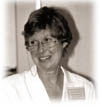 In painting, sculpture, belles-lettres, and in music, we have all
witnessed styles fall in and out of favor with irreverence. As I look back on our
demi-century of harpsichord manufacture I ponder the changes in artistic taste as they
evolved sometimes slowly, sometimes rapidly, but never irreversibly.
In painting, sculpture, belles-lettres, and in music, we have all
witnessed styles fall in and out of favor with irreverence. As I look back on our
demi-century of harpsichord manufacture I ponder the changes in artistic taste as they
evolved sometimes slowly, sometimes rapidly, but never irreversibly.
The artisan industry of musical instrument making was never immune to
stylistic change. We are most aware of this capriciousness when we consider performance
practice. In the fifty years of Hubbard activity we have seen "period"
orchestras ascend from the back rooms of local early music societies to their now
seemingly permanent position on the world musical stage.
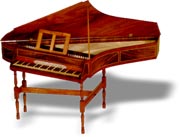 Within the Hubbard workshop the trickle down effect of stylistic change is
evident in our order books. Throughout the 50's a French double-manual harpsichord was
considered a novelty, and English instruments were all the rage. At the very least, one's
instrument had to look like 18th century English furniture regardless of its inner soul.
Within the Hubbard workshop the trickle down effect of stylistic change is
evident in our order books. Throughout the 50's a French double-manual harpsichord was
considered a novelty, and English instruments were all the rage. At the very least, one's
instrument had to look like 18th century English furniture regardless of its inner soul.
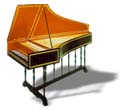 During the 60's, after restoring his own 1584 Moermans
harpsichord to playing condition and introducing this design to his customers, Frank
Hubbard's order book was filled with nothing but Flemish instruments. I remember so
clearly when we met in 1963, Frank was years behind in deliveries of Flemish instruments
and convinced he would meet his maker before completing them all.
During the 60's, after restoring his own 1584 Moermans
harpsichord to playing condition and introducing this design to his customers, Frank
Hubbard's order book was filled with nothing but Flemish instruments. I remember so
clearly when we met in 1963, Frank was years behind in deliveries of Flemish instruments
and convinced he would meet his maker before completing them all.
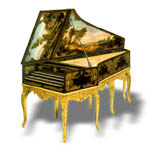 In 1966-67
Frank was invited to establish a restoration workshop for the collection of musical
instruments at the Conservatoire National Superieur de Musique in Paris. There he examined
several new French designs and soon was keen to offer these to his customers.
Simultaneously, the restoration of the Boston Museum's magnificent Henry Hemsch
harpsichord (1736?) was underway in our Waltham shop. The timing was propitious. Upon his
return to the U.S., Frank appealed to those on the waiting list to change their Flemish
orders to the "new" French design. Some did, some didn't, but the rest is
history. French doubles proliferated.
In 1966-67
Frank was invited to establish a restoration workshop for the collection of musical
instruments at the Conservatoire National Superieur de Musique in Paris. There he examined
several new French designs and soon was keen to offer these to his customers.
Simultaneously, the restoration of the Boston Museum's magnificent Henry Hemsch
harpsichord (1736?) was underway in our Waltham shop. The timing was propitious. Upon his
return to the U.S., Frank appealed to those on the waiting list to change their Flemish
orders to the "new" French design. Some did, some didn't, but the rest is
history. French doubles proliferated.
By the time Hendrik Broekman returned to the Hubbard shop after Frank's
death in 1976, the 18th century French double had become the most ubiquitous design for
modern copies used on the concert stage and in the living room. It was now Hendrik's turn
to wax wistful about stimulating orders for German and English instruments so that we
could hear the sonorities Bach and Handel might have heard when they sat down for the
first time at a new instrument by a native maker.
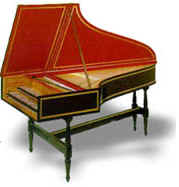 If the
concept of the Hubbard & Broekman German double was born in that instant it was more
than a decade before the first German harpsichord left the workshop in 1989. You may
remember that during the 60's to wish for a large German style harpsichord was considered
poor taste. Clearly, today our outlook has changed. We are very enthusiastic about our
Hass instruments with their exceptional brilliance and their ability to execute the
clearest articulations. So much so that Hendrik, not one to be taken in by fads, has
abandoned his Franco/Flemish double and is building himself a new love . . . a magnificent
Hass. Fickle? Perhaps, but I don't believe so.
If the
concept of the Hubbard & Broekman German double was born in that instant it was more
than a decade before the first German harpsichord left the workshop in 1989. You may
remember that during the 60's to wish for a large German style harpsichord was considered
poor taste. Clearly, today our outlook has changed. We are very enthusiastic about our
Hass instruments with their exceptional brilliance and their ability to execute the
clearest articulations. So much so that Hendrik, not one to be taken in by fads, has
abandoned his Franco/Flemish double and is building himself a new love . . . a magnificent
Hass. Fickle? Perhaps, but I don't believe so.
Remarkably, we have endured 50 years in this field. How it will evolve
in the next millennium is unpredictable. The only sure thing is that artistic taste and
styles will continue to change and that Hubbard Harpsichords will be there acting in the
dual role of preserver of the past and innovator for the future.